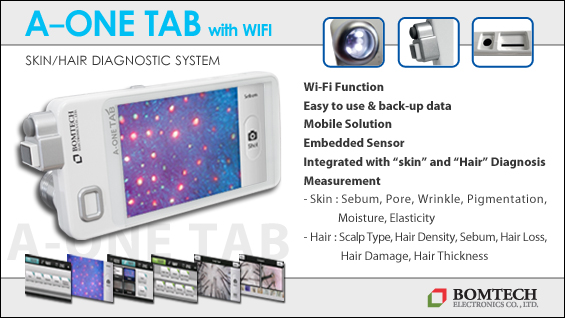Development History of Vascular Laser
With the development of argon laser in 1970s, laser therapy has started for port wine stain first. The laser developed at that time used continuous wave mode, not pulsed mode, causing a lot of side effects after the therapy, as much as about 25% of patients reporting scar formation. This limitation was improved in 1980s when flash lamp pumped pulsed dye laser was developed. In addition, after careful observation of laser light absorption spectrum, 585 and 595nm lasers with very high absorption to oxyhemoglobin has become the gold standard for vascular treatment. In 1990s, dynamic cooling device was introduced, allowing the treatment of dilated blood vessels inside the dermis while protecting the epidermis very effectively. In 2000s, pulsed dye laser with long pulse duration was developed. Despite high output energy, long pulse width emitted in a fractionated mode decreased the risk of purpura, which was common after vascular laser therapy.
[Advertisement] A-One Tab with Wi-Fi(Skin/Hair Diagnostic System) – Manufacturer: BOMTECH(www.bomtech.net)
Pulsed Dye Laser: Criterion Standard for Vascular Disorder
Pulsed dye laser is known as the ideal laser as it emits wavelengths (585nm or 595nm) that has the highest absorption coefficient in oxyhemoglobin. However, because the emitted wavelength cannot penetrate deep enough (at most 1-2mm from the surface), it is less effective for the treatment vascular lesions located deep in the dermis. Yang et al. (J Am Acad Dermatol 2005;52:480~490) reported the results of treating 17 port-wine stain patients with 595nm pulsed dye laser and 1064nm Nd:YAG Laser. When Nd:YAG laser was used at the minimum purpura dose, the safety and efficacy was comparable to pulsed dye laser.
Long Pulsed Nd:YAG Laser for Vascular Disorder
1064nm Nd:YAG laser is generally safe in patients with black skin as it is weakly absorbed by melanin. Since early 2000s, it has been commonly used for leg vein, because it can reach down the whole reticular dermis. 1064nm is not well absorbed in hemoglobin, but the absorption coefficient in hemoglobin is 10 times higher than that in water, making it appropriate for the treatment of vascular lesions while minimizing damage to surrounding tissues (selective photothermolysis). It also requires less number of treatments than other lasers for vascular lesions because it can coagulate the whole blood vessels with high energy (homogeneous heating). One limitation is that it requires relatively very high energy (300J/cm2 or higher) when treating blood vessel of small diameter, which has less number of red blood cells that absorbs the laser light . Therefore, it is rarely used for facial lesions with thin skin where the risk of side effects is increased compared to conventional vascular lasers.
Long Pulsed Nd:YAG Laser for Facial Telangiectasia
Recently, a number of investigators have reported the results of using long pulsed Nd:YAG laser, as well as pulsed dye laser, for facial vascular lesions and mucosal vascular lesions (Bevin AA et al, Dermatol Surg 2006;32:7~12, Karsai S et al, Derm Surg 2008;34:702~708, Civas E et al, Dermatol Surg 2009;35:1933~1941, Yang HY et al, J Craniofac Surg 2009;20:1214~1217, Ross EV et al, Dermatol Surg 2010;36:470~474). I also used pulsed dye laser or intense pulsed light for treatment in the past, but now I am using long pulsed Nd:YAG laser for patients with recurrent facial vascular lesions, which brings out very effective clinical outcomes after only single or 2 courses of therapy. When used properly, while taking care of the precautions, long pulsed Nd:YAG laser is a very effective laser for patients with facial vascular lesion.
Adverse Effect after Long Pulsed Nd:YAG Laser
As mentioned above, long pulsed Nd:YAG laser uses very high energy, and thus, it is very important to protect the epidermis and the dermis surrounding the blood vessel. Pulsed dye laser hardly causes severe blisters by stacking the pulse on a treated area, because it is equipped with a dynamic cooling device. On the other hand, long pulsed Nd:YAG laser heats the overall blood vessels, in which case pulse stacking is very risky. Only the target blood vessel should be irradiated by selecting the smallest spot size so that the heat energy would not be delivered to the surrounding tissues, and vascular change should be checked up right after laser irradiation. Vascular graying or vessel spasm generally occurs for a couple of seconds and moving upto 1-2millimeters from the optimal response of vessel, the next spot should be treatment to prevent any unwanted side effects.

Fig 1. Lesions improved after long pulsed Nd:YAG laser therapy (long arrow). Unwanted pulse stacking occurred at the alar base. The patient visited the day after the procedure complaining blister, for which strong topical steroid was applied. The pigmentation was still observable 3 months after the procedure. (A: Before the procedure, B: 12 weeks after single long pulsed Nd:YAG procedure).
Prevention of Unwanted Adverse Effect
Epidermal cooling is most important when using long pulsed Nd:YAG laser on thin skin. Cooling methods include dynamic cooling device, contact cooling and air cooling. Since contact cooling may contract the target blood vessel, dynamic cooling device and air cooling is preferred when treating vascular lesions. Sometimes the air cooling may also reduce therapeutic effect when the epidermis was excessively cooled down. Therefore, it is most desirable to maintain the temperature of epidermis at about 10℃. Cleaning the target area with alcohol swab before the procedure allows better visualization of the vascular lesion. When applying air cooling, the air stream should be exposed to the target area for 1-2 seconds before irradiating the laser. After the procedure, vascular change should be carefully observed before determining the next target area, as mentioned above.

Fig 2. Long pulsed Nd:YAG laser seems very effective for facial telangiectasis (A: before the procedure, B: 1 month after single long pulsed Nd:YAG procedure).
- To be continued -
▶ Previous Artlcle : #1. Hyperpigmentation
▶ Next Artlcle : #3. Herpes Outbreak, Not Uncommon Side Effects After Fractional Laser





















